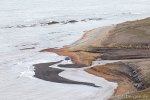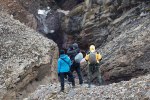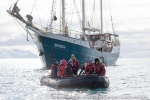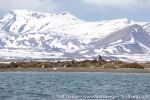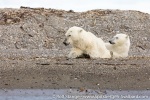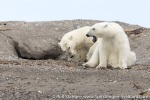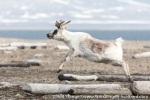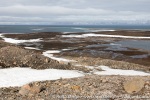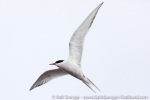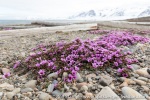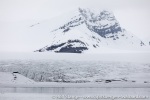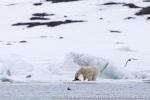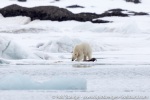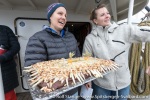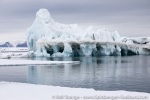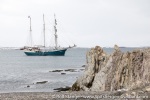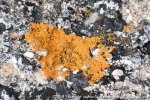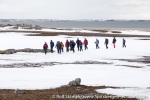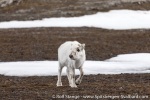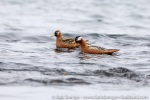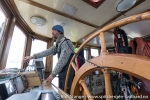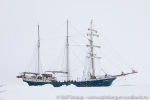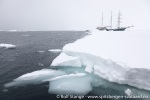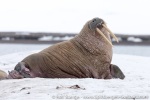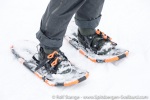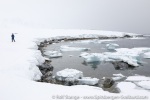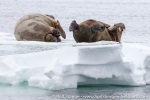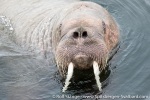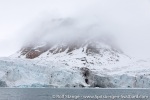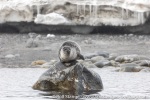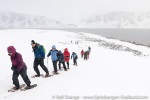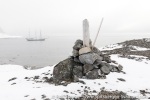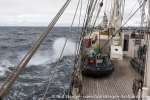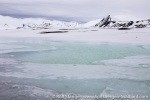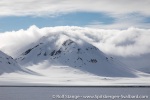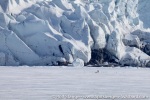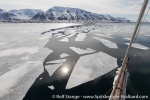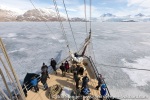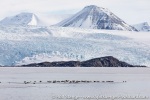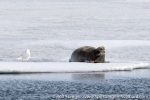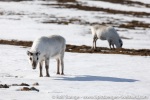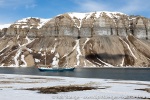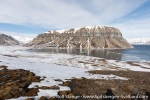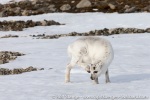-
current
recommendations- Liefdefjord
New page dedicated to one of Spitsbergen's most beautiful fjords. Background information and many photos.
- New Spitsbergen guidebook
The new edition of my Spitsbergen guidebook is out and available now!
- Liefdefjord
New page dedicated to one of Spitsbergen's most beautiful fjords. Background information and many photos.
Page Structure
-
Spitsbergen-News
- Select Month
- May 2025
- April 2025
- March 2025
- February 2025
- January 2025
- December 2024
- November 2024
- October 2024
- September 2024
- August 2024
- July 2024
- June 2024
- May 2024
- April 2024
- March 2024
- February 2024
- January 2024
- December 2023
- November 2023
- October 2023
- September 2023
- August 2023
- July 2023
- June 2023
- May 2023
- April 2023
- March 2023
- February 2023
- January 2023
- December 2022
- November 2022
- October 2022
- September 2022
- August 2022
- July 2022
- June 2022
- May 2022
- April 2022
- March 2022
- February 2022
- January 2022
- December 2021
- November 2021
- October 2021
- September 2021
- August 2021
- July 2021
- June 2021
- May 2021
- April 2021
- March 2021
- February 2021
- January 2021
- December 2020
- November 2020
- October 2020
- September 2020
- August 2020
- July 2020
- June 2020
- May 2020
- April 2020
- March 2020
- February 2020
- January 2020
- December 2019
- November 2019
- October 2019
- September 2019
- August 2019
- July 2019
- June 2019
- May 2019
- April 2019
- March 2019
- February 2019
- January 2019
- December 2018
- November 2018
- October 2018
- September 2018
- August 2018
- July 2018
- June 2018
- May 2018
- April 2018
- March 2018
- February 2018
- January 2018
- December 2017
- November 2017
- October 2017
- September 2017
- August 2017
- July 2017
- June 2017
- May 2017
- April 2017
- March 2017
- February 2017
- January 2017
- December 2016
- November 2016
- October 2016
- September 2016
- August 2016
- July 2016
- June 2016
- May 2016
- April 2016
- March 2016
- February 2016
- January 2016
- December 2015
- November 2015
- October 2015
- September 2015
- August 2015
- July 2015
- June 2015
- May 2015
- April 2015
- March 2015
- February 2015
- January 2015
- December 2014
- November 2014
- October 2014
- September 2014
- August 2014
- July 2014
- June 2014
- May 2014
- April 2014
- March 2014
- February 2014
- January 2014
- December 2013
- November 2013
- October 2013
- September 2013
- August 2013
- July 2013
- June 2013
- May 2013
- April 2013
- March 2013
- February 2013
- January 2013
- December 2012
- November 2012
- October 2012
- September 2012
- August 2012
- July 2012
- June 2012
- May 2012
- April 2012
- March 2012
- February 2012
- January 2012
- December 2011
- November 2011
- October 2011
- September 2011
- August 2011
- May 2011
- April 2011
- March 2011
- February 2011
- January 2011
- December 2010
- November 2010
- September 2010
- August 2010
- July 2010
- June 2010
- May 2010
- April 2010
- March 2010
- February 2010
- November 2009
- October 2009
- August 2009
- July 2009
- June 2009
- May 2009
- April 2009
- March 2009
- February 2009
- January 2009
- December 2008
- November 2008
- October 2008
- August 2008
- July 2008
- June 2008
- May 2008
- April 2008
- March 2008
- February 2008
- April 2000
- Select Month
-
weather information
-
Newsletter

| Guidebook: Spitsbergen-Svalbard |
Home →
Yearly Archives: 2019 − News & Stories
Engelskbukta, Fjortende Julibukta – 28th June 2019
Fri
28 Jun
2019
A fair breeze has brought us up north again. A few years ago in Engelskbukta, a glacier had advanced strongly and turned its surroundings into an impressive ice age landscape. Geomorphology live! And a chance for an easy, little glacier hike.
A couple of hours later are we in Krossfjord. Wind, sun, blue sky, blue water, rugged mountains, wild glaciers, guillemots, puffins, green slopes with colourful flowers. A paradise of arctic nature!
Gallery – Engelskbukta, Fjortende Julibukta – 28th June 2019
- gallery anchor link: #gallery_1542
Click on thumbnail to open an enlarged version of the specific photo.
But a windy one. After a stunning passage near Blomtrandbreen, we drop the anchor behind Blomstrandhalvøya for a calm night.
Bellsund – 27th June 2019
Thu
27 Jun
2019
Southwards – that was to be Hornsund for us. After checking the updated weather forecast, we had changed our plan and went to Bellsund. The weather does not seem to be too promising further south.
So Bellsund is the place for today. It is a bit grey, but calm and silent as the anchor goes down after breakfast.
Recherchefjord is a place full of history from several centuries. Like the first winterers on Spitsbergen, Tsjitsjagov’s badly planned expedition, the rather successful Recherche-expedition, the unlucky voyage of the Monte Cervantes and the mystery of Gjæver’s Villa.
Other stories reach further back. Such as the fossilised moraine that dates to the snowball earth era. Almost 600 million years back.
Later, we enjoy a good tundra walk in Van Keulenfjord. Plenty of curious reindeer everywhere. We reach some beautiful viewpoints and stunning scenery, before we get back to the ship, a bit late for dinner.
Gallery – Bellsund – 27th June 2019
- gallery anchor link: #gallery_1538
Click on thumbnail to open an enlarged version of the specific photo.
I almost can’t believe it when Captain Robert shows me the latest weather forecast. Southeastern Spitsbergen, until recently the place where we wanted to go, will soon turn into a very unpleasant weather hole. We prefer to change our plans and stay somewhere nice, so we set course northwards again. It may look a bit strange later on the map, but cares?
Forlandsund – 26th June 2019
Wed
26 Jun
2019
The last two weeks in Longyearbyen went by very quickly … and now we are already off again, with 2 ½ weeks of sailing in Spitsbergen with SV Antigua ahead of us.
The north coast is still in dense ice, so we will probably spend some time in the south and southeast. But to start with, we go at least a little bit northwards. Recent sightings have confirmed good chances to see walruses in Forlandsund, and the weather forecast seems perfect: a calm day for excursions and then a fair northerly breeze to fill the sails on the way south.
So here we go. On the first morning of the trip, we wake up at anchor near a little peninsula in Forlandsund. There is a group of walrus hauled out on shore, maybe 40-50 animals. And … two polar bears! A mother and her second year cub are making their way towards the walruses.
It was to be a stunning morning. With the Zodiacs we managed to get into a good position to be a fly on the wall. The bears tried to make the walrus panic, but without much success. Finally they moved away again a bit, walked up and down the beach and finally laid down for a rest. A beautiful series of events and behaviours, which we are blessed to have witnessed!
Gallery – Forlandsund – 26th June 2019
- gallery anchor link: #gallery_1535
Click on thumbnail to open an enlarged version of the specific photo.
Later we go for a little tundra walk at Murraypynten on Prins Karls Forland to earth ourselvs again (quite literally, the tundra is still quite wet and a bit boggy …)
Once all are back on board, we prepare the sails. The engine can take a break, the wind is doing the work for us now. Let’s go south!
Isfjord – 08th June 2019
Sat
8 Jun
2019
It is unbelievable how time flies – not the trip was short, actually! But the days were full and exciting. Today, we are back in Isfjord, and now the sun comes finally out behind the clouds. We have deserved that, we have not seen much from the sun recently.
Everybody is excited, and there is a great motivation to see more wildlife. Not that we haven’t seen any so far, but still. So we move on with Antigua, cruising various bays. And the guys are there. Walruses in Borebukta. And there is even a polar bear near Sveabreen. The bear is having breakfast with a seal. Well, in a way. Being the seal would be rather unfortunate.
It is a wonderful afternoon to round a great trip off. We enjoy the whole scenery with a lot of time, silence and peace. There is a lot of ice around us, drifting bits and pieces of glacier ice, fast ice towards the glacier, and the mountains are still largely snow-covered. Finally we step into the Zodiacs once again to enjoy the ice.
Gallery – Isfjord – 08th June 2019
- gallery anchor link: #gallery_1523
Click on thumbnail to open an enlarged version of the specific photo.
Then it is time to set course for Longyearbyen.
Forlandsund – 07th June 2019
Fri
7 Jun
2019
It is lovely to return to the tundra after so much snow and ice further north. There is, of course, still a lot of snow also at sea level here at the central west coast, but the snow-free patches of vegetation are getting larger and larger, to the delight of geese and reindeer, which are here in numbers. We have even found some early flowers of the purple saxifrage!
We are in Eidembukta and venture out in three groups for a little walk, following the beautiful coastline and hiking to some low hills for the views. As always, Ingolf manages to find some interesting birds, such as the first grey phalaropes of the trip, and even some common scoters. And there are geese, mainly barnacle geese, and of course plenty of reindeer. In some places the snow is still deep enough to make walking a bit challenging, but it is good fun at the same time and of course it is good to burn some calories …
Later we move up to St. Jonsfjord, where we have a look at the fast ice edge and then drop the anchor near Gaffelbreen. Also here, we go for a walk. Some enjoy the views of the glacier from the moraine ridge, while others visit a little hut, built from driftwood logs.
Gallery – Forlandsund – 07th June 2019
- gallery anchor link: #gallery_1520
Click on thumbnail to open an enlarged version of the specific photo.
Back on Antigua, it is time to celebrate. It was – and still is – a great trip. Annika, Christin and Jana have prepared a little party for everybody, and Sascha is making sure that the BBQ is on and red-hot, with plenty of goodies. A big thanks to all of you – it is a great evening in good company and stunning surroundings!
Drift ice – 05th and 06th June 2019
Wed
5 Jun
2019
It is amazing how quickly things change here: just yesterday, Danskegattet was completely ice free, and now there are floes of loose drift ice, so we stay away from this partly shallow passage and keep to the outer side of Amsterdamøya.
Drift ice around the northwest corner of Spitsbergen. That is how it used to be – just that it used to be well into July in the old days and not just in the beginning of June, as it is now.
We pass one field of drift ice after the other, and some of the offlying islands: Fuglesongen, where we hear the crazy laughter of the thousands of little auks, and Klovningen. Later, we reach the entrance to Raudfjord. Dense drift ice everywhere, and the whole map is still frozen solid, at least according to the ice chart. After a little Zodiac excursion, we take off and move out, as we don’t want to spend a couple of weeks here.
Meanwhile, the drift ice around Amsterdamøya has become so dense that the passage back to open water takes more time than planned. This is great – nature is in control! We spend one more night, just drifting in an area of open drift ice, and then it takes about half a day to navigate through Smeerenburgfjord and Sørgattet.
Gallery – Drift ice – 05th and 06th June 2019
- gallery anchor link: #gallery_1515
Click on thumbnail to open an enlarged version of the specific photo.
From there, we follow the west coast to the south. Everything here is grey today. In the evening, we reach Prins Karls Forland, where we visit a group of pretty active walruses to round the day off.
Gallery – Drift ice – 05th and 06th June 2019 – 2
- gallery anchor link: #gallery_1517
Click on thumbnail to open an enlarged version of the specific photo.
Danskøya – 04th June 2019
Tue
4 Jun
2019
We had reached the northwestern corner of Spitsbergen over night. Here, in the high north, the land was still covered with a thick layer of snow, so we got the snow shoes out and went for a lovely walk.
On the way to Smeerenburgbreen (-glacier), we found two walruses. One of them was quite curious and swam towards the ship. The wildlife encounters that involve the curiousity of the animals as much as ours are always the best ones!
Finally we took the opportunity to revive an old and almost forgotten tradition. We went to the „postbox“ in Kobbefjord on Danskøya, a cairn where northgoing ships used to leave mail. This was often their last opportunity for weeks or even months to make contact with the outside world! Southbound ships went and took the mail with them if the opportunity occured and delivered the letters to a post office in Norway. Let’s see when our postcards arrive at their destination …?
Gallery – Danskøya – 04th June 2019
- gallery anchor link: #gallery_1511
Click on thumbnail to open an enlarged version of the specific photo.
Some harbour seals have already occupied their summer position on rocks on shallow waters just off the shore.
Forlandsund & Krossfjord – 03rd June 2019
Mon
3 Jun
2019
The weather in Forlandsund was not quite like what the forecast had promised: a stiff northerly breeze made things a bit difficult and life unfomfortable until we had reached sheltered waters again in Krossfjord. There, we were happy to walk on solid ground again. We had a look at the remains of the geophysical observatory that was operated in Ebeltofthamna from 1912 to 1914 and later we visited a seabird colony further north in Krossfjord.
Gallery – Forlandsund & Krossfjord – 03rd June 2019
- gallery anchor link: #gallery_1508
Click on thumbnail to open an enlarged version of the specific photo.
Billefjord – 02nd June 2019
Sun
2 Jun
2019
We were very curious what the day might bring – there had been plenty of polar bear sightings recently in Billefjord. Just yesterday, no less than 3 bears had been observed here! So soon under breakfast we were under steam again. Just a few miles to the ice edge in inner Billefjord.
It did not take much time until we had seen the bears on the fast ice near Nordenskiöldbreen, but far away, too far for good photography. One of the bears was eating a seal, the other one was walking back and forth in the same area, waiting for his chance to get a share of the meal. We followed the whole scene with our binoculars and secured good views with Ingolf’s telescope, but it was too far to obtain reasonable photos. But the whole landscape setting was stunning, with the ice cliff of the glacier in the background and the ice edge where some seals were resting on ice or playing in the water.
Gallery – Billefjord – 02nd June 2019
- gallery anchor link: #gallery_1505
Click on thumbnail to open an enlarged version of the specific photo.
Later, we ventured for our first landing in Skansbukta, where we saw reindeer in amazing numbers and we enjoyed the sunny views of the impressive scenery – well deserved after ascending the slope through deep snow.
Longyearbyen – Skansbukta, 01st June 2019
Sat
1 Jun
2019
Brave Marathon-runners do their work in and near Longyearbyen, while we get ready for action on Antigua. In the afternoon, we are ready to set sail on Antigua, and that is exactly what we actually do as soon as Captain Robert has said hello to everybody. A brief introduction turns us all into real sailers, and soon the canvas goes up into the breeze, and the reasonably warm sun sees us sailing out of Adventfjord and northwards, across Sassenfjord.
We have set course for Skansbukta, where we drop the anchor for the night. It is a wonderful northern evening in good company, many here on board have been on Antigua more often than some of the crew!
Gallery – Longyearbyen – Skansbukta, 01st June 2019
- gallery anchor link: #gallery_1502
Click on thumbnail to open an enlarged version of the specific photo.
Ingolf has got a lot of work with his telescope, there are plenty of reindeer and several arctic foxes on the tundra and hundreds of common eiders with an amazing number of king eiders amongst them.
Spitsbergen under sail 2019 and Rolf’s arctic blog starting now
The arctic summer season “Spitsbergen under sail” is starting tomorrow (Saturday) with sV Antigua: we are starting our first departure in Longyearbyen – arctic spring/early summer. Exploring stunning landscapes, ice and snow and the arctic wildlife under sail!

Spitsbergen under sail: with SV Antigua to the ice.
And this means of course that my arctic blog on exactly this page will be updated again regularly, and it is absolutely worth coming back and checking for new photos and short stories. Join us online when we explore remote arctic fjords and islands and meet the wildlife! We will explore Spitsbergen several times under sail with SV Antigua, but also with the smaller SY Arctica II and we will also venture to Greenland with the good SY Anne-Margaretha.
And if you want to join us in real life – the voyage descriptions for 2020 are now online! (German only, sorry, but that is the board language on these trips).
Polar bear close to Longyearbyen
A polar bear was seen close to Longyearbyen near 5 a.m. on Monday (27 May) morning. It was in Adventdalen, not far from the road and the lowermost houses. The Sysselmannen (police) was called, several shots were fired with a flare gun and the helicopter went out to scare the bear away from Longyearbyen. The bear then walked away along the shore towards Hiorthhamn, on the other side of Adventfjord.
The public is reminded to take the risk of meeting a polar bear seriously also near Longyearbyen.

The Sysselmannen’s helicopter and the polar bear (lower left) in Adventdalen.
Geese arrived in Spitsbergen after spring migration
Sun
26 May
2019
Spring has also arrived in arctic Spitsbergen. Early migrating birds such as the snow bunting and Little auk came already more than a month ago in April, filling the tundra in and around Longyearbyen respectively the mountain slopes with their singing (snow bunting) and crazy laughter (snow bunting).
Temperatures are still cold, mild frost, but the snow-free tundra patches are growing every day and the rivers show signs of breaking up.

Tundra is coming through the snow in Adventdalen.
By now, most migrating birds have returned to their summer territories. A good week ago, the first Pink-footed geese were suddenly sitting, well camouflaged, on the tundra next to the roads in Longyearbyen, and the first Barnacle geese followed soon.

Brent geese on the shore of Adventfjord (a Barnacle goose in the background).
Once the first geese had arrived, dozens and hundreds followed during the next couple of days to settle down on snow-free tundra areas in Adventdalen and even within Longyearbyen. In this area, the snow melt starts regularly a couple of weeks early than elsewhere in Spitsbergen, making the tundra areas here an important resting area for many birds, which feed on tundra vegetation, after their spring migration. Later they will disperse to their various breeding areas within the region.

Brent geese on the shore of Adventfjord (Pink-footed geese in the foreground).
Currently, it is very easy to observe all geese species that breed in Spitsbergen as well as Common eider ducks, King eider and many otehr species very close to or even within Longyearbyen. Soon they will move to more inaccessible areas and then most of them will also be very shy. Then, it will be much more difficult, if not impossible, to secure good observations and photos, even with good equipment.
Especially the Brent goose is a difficult species to observe. It is not an everyday sight during the summer and observations are usually from a greater distance. So it is a special pleasure to see this species on a short distance on the shore of Adventfjord just next to Longyearbyen. As long as you stay a bit hidden or within a car, the risk of disturbance is low.

All three species of geese that breed in Spitsbergen in one photo:
Pink footed goose, Barnacle goose and Brent goose, Adventfjord.
I am almost a bit proud of this last photo that has all three species of geese that breed in Spitsbergen in one frame: Pink footed goose (upper left, not sharp), Barnacle goose (lower left) and Brent goose (lower right).
Housing market in Longyearbyen: avalanches and Airbnb
Housing market in Longyearbyen under pressure
The difficult housing market in Longyearbyen has been the subject on these pages already several times before. For years, it has been almost impossible to find an affordable place to live.
139 flats to be demolished
The situation got worse after the tragic 2015 avalanche, which killed 2 people in their homes and destroyed several houses. In the aftermath, a new avalanche risk evaluation was made for Longyearbyen. The shocking result is that houses with a total of no less than 139 flats have to be demolished, and avalanche barriers to secure remaining buildings are needed. A number of avalanche protections have already been built on the slopes of Sukkertoppen.
Further 41 fats at risk
Now doubts are coming up if it will actually be possible to secure some of the remaining buildings suffciently. The requirement is to build avalanche protection that is strong enough even for worst case scenarios of climate change – “business as usual” scenarios regarding future global CO2 emissions. In this case, foundations would have to go as deep down into the slope as 14 metres to make the barriers strong enough.
The question is if this is actually possible in the steep terrain. The answer is currently unclear. In the worst case, further houses with up to 41 homes will have to be removed, as reported by Svalbardposten. This concerns houses close to Sukkertoppen in Way 228.
Even though the result – demolition or not – is currently uncertain, one thing is for sure: the housing market in Longyearbyen will become even more difficult.

Residential houses, and avalanche barriers on Sukkertoppen.
Airbnb
Another factor which has caused public debate over years is the short-term rental platform AirbnB. It is no secret that a number of homes in Longyearbyen are rented out by their respective owners on short-term basis via Airbnb to tourists and not on long-term contracts to people who want to live in Longyearbyen. The actual number of homes that are lost this way for the housing market is not exactly known, but it is considered significant. When Svalbardposten recently researched the issue, 36 homes in Longyearbyen were offered on Airbnb.
More exact numbers are currently not available, so the community (Lokalstyre) has ordered a report from a specialised company to get more information about the influence of Airbnb on the local housing market. Depending on the result, the community could then consider limitations.
Airbnb is in the centre of public discussions linked to the housing market in many places in the world, but Longyearbyen may be more difficult than other towns: it is a small place with a small number of houses, where every loss makes a difference. There are many tourists with a lot of money, distorting the small and tight local housing market. Thirdly, you can not just move, settle down in the next village and commute.
One thing is for sure: it is currently almost impossible to find a home in Longyearben for smaller incomes.
Two persons dead in mountain accident in Hornsund
Two persons died during a mountain hike in Hornsund. They were a woman and a man who belonged to the crew of the Polish research station in Hornsund. They had set out for a private tour on Friday but did not return until the agreed time on Sunday morning, so the remaining station crew started a search.

Map of Hornsund showing the research station and the mountain Kamkrona (accident site). © topographic base: Norwegian Polar Institute.
They had ascended the mountain Kamkrona, which is part of Sofiekammen, a long, steep ridge on the west side of Burgerbukta. Kamkrona is about 8 km east of the research station and 770 metres high, the east side of the mountain is very steep.

The mountain ridge Sofiekammen on the west side of Burgerbukta in Hornsund. Kamkrona is a peak approximately in the middle.
According to a press release by the Sysselmannen the two victims died during a fall of several hundred metres in an avalanche. No further details are public so far. The victims were recovered by SAR forces of the Sysselmannen and brought to Longyearbyen.
Update: According to Svalbardposten, Sysselmannen police officer Anders Haugerud told the Norwegian news agency NTB that the two appear to have stepped out on an overhanging snow bank on the mountain top. This was later confirmed.
As the families are informed, the names of the two deceased have been officially released. They were Anna Górska and Michal Sawicki. Both had been working at the station, Anna as meteorologist and Michal as geophysicist.
News-Listing live generated at 2025/May/07 at 13:30:36 Uhr (GMT+1)



